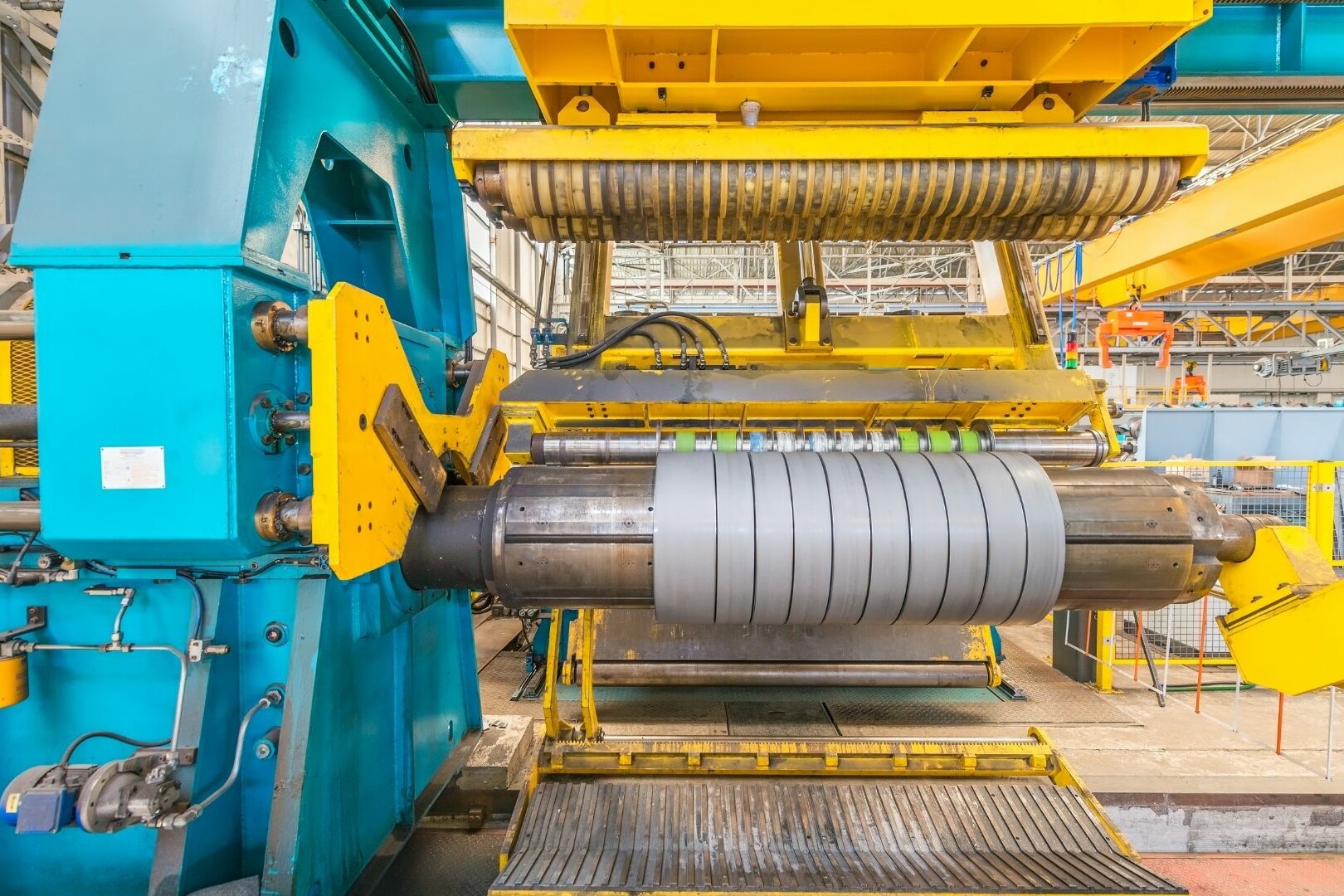Pulp and paper production is a vital industry that produces a wide range of products, from paper and cardboard to tissue and pulp. However, the production process is complex, energy-intensive, and requires a large number of machines and equipment to operate. As a result, ensuring that these machines and equipment are running smoothly and efficiently is crucial to the success of the industry. This is where predictive maintenance comes in.
Harsh Operating Environments in Pulp and Paper Industry
The very essence of pulp and paper production is rooted in robust and often demanding industrial environments. From the initial stages of pulping to the final paper manufacturing processes, machinery operates in conditions characterized by high temperatures, corrosive chemicals, and abrasive materials. The aggressive nature of these environments poses a substantial threat to the longevity and performance of equipment, necessitating a maintenance approach that can proactively address issues before they escalate. Predictive maintenance, with its emphasis on real-time monitoring and condition-based assessments, becomes a linchpin in mitigating the impact of harsh operating conditions on the machinery.
The pulp digester, for instance, operates in an environment where wood chips undergo intense chemical and thermal treatments. Predictive maintenance technologies, such as vibration analysis and chemical process monitoring, play a pivotal role in ensuring the structural integrity of the digester by detecting anomalies early, preventing catastrophic failures, and ultimately extending the equipment’s lifespan.
Variety of Equipment Types
The diversity of equipment within pulp and paper mills adds an additional layer of complexity to maintenance considerations. From the massive paper machines responsible for turning pulp into sheets to the intricate network of conveyors and rollers facilitating material flow, each piece of equipment has its own set of specifications, failure modes, and maintenance requirements. This diversity underscores the need for a tailored approach that acknowledges the nuances of individual equipment types.
Predictive maintenance, by leveraging a range of technologies like vibration analysis, thermal imaging, and data analytics, offers a versatile toolkit that can be customized to suit the unique demands of different equipment. Whether it is monitoring the health of bearings in rotating equipment or ensuring the optimal performance of drying sections through thermography, predictive maintenance aligns with the varied needs of the equipment, providing a comprehensive solution to the industry’s diverse machinery landscape.
Importance of Preventing Process Interruptions
In the pulp and paper industry, where operational continuity is paramount, any unplanned downtime can have cascading effects on production schedules, product quality, and overall efficiency. Process interruptions not only result in immediate financial losses but can also impact the reputation of a mill in terms of meeting customer demands and contractual obligations.
Predictive maintenance emerges as a strategic imperative in addressing the critical objective of preventing process interruptions. By continuously monitoring the condition of equipment and predicting potential failures, this approach enables maintenance teams to schedule interventions during planned shutdowns or maintenance windows, minimizing the risk of unplanned downtime. Through early detection of equipment anomalies and degradation, predictive maintenance acts as a proactive safeguard against disruptions, contributing significantly to the sustained and uninterrupted flow of production within the pulp and paper industry.

Predictive Maintenance for Key Equipment in the Pulp & Paper Industry
The effective application of predictive maintenance in the pulp and paper industry requires a nuanced understanding of the unique challenges and operational intricacies associated with key equipment. This section delves into specific equipment categories, exploring their roles, challenges, and the tailored predictive maintenance strategies employed for optimal performance and longevity.
Pulp Digesters
Role in the Pulping Process
Pulp digesters are the heart of the pulping process, where raw materials, typically wood chips, undergo chemical treatments to separate fibers and produce pulp. This crucial stage lays the foundation for the quality and characteristics of the final paper product.
Unique Challenges and Failure Modes
Pulp digesters operate under extreme conditions, subject to high temperatures, corrosive chemicals, and intense pressure. The combination of these factors introduces unique challenges, including corrosion of structural components, erosion of vessel walls, and potential equipment fatigue.
Application of Predictive Maintenance Techniques
Vibration Analysis: Continuous monitoring of vibrations in the digester provides insights into the mechanical health of rotating components, aiding in the early detection of misalignments or bearing issues.
Temperature Monitoring: Real-time temperature monitoring allows for the identification of abnormal heat patterns, indicating potential issues such as overheating or insufficient cooling.
Paper Machines
Paper machines represent the intricate web of processes where pulp is transformed into the final paper product. This multifaceted journey involves various stages such as forming, pressing, drying, and finishing.
Importance of Press Section in Paper Machines
The press section plays a pivotal role in the papermaking process, exerting pressure to remove water from the pulp and enhance sheet consistency before entering the drying phase. Efficient operation in this section is crucial for the overall quality and production speed.
Predictive Maintenance Strategies for Paper Machines
Vibration Monitoring in Rollers: Monitoring the vibrations in rollers helps identify imbalances or misalignments, preventing potential breakdowns and ensuring even pressure distribution.
Thermography for Dryer Sections: Infrared thermography is employed to detect temperature irregularities in dryer sections, preventing overheating and potential fire hazards.
Quality Monitoring through Data Analytics: Predictive maintenance extends beyond machinery health, encompassing the quality of the end product through data analytics that identify patterns affecting paper quality.
Conveyors and Material Handling Equipment
Criticality in Material Flow
Conveyors and material handling equipment form the arteries of the pulp and paper mill, ensuring the seamless flow of materials between various processing stages.
Wear and Tear Challenges
The constant movement and abrasion in material handling introduce challenges related to wear and tear, leading to issues such as belt degradation, roller misalignment, and increased friction.
Predictive Maintenance Applications
Wear Particle Analysis: Regular analysis of wear particles in lubricating oils helps predict component degradation, allowing for timely replacements and avoiding catastrophic failures.
Belt Condition Monitoring: Continuous monitoring of belt conditions through sensors detects signs of wear, misalignment, or tension issues, preventing unexpected failures.
Load and Stress Analysis: Predictive maintenance includes load and stress analysis, ensuring that equipment operates within optimal capacity to minimize wear and enhance longevity.

Sustainability is one of the key concepts the pulp and paper industry is focusing on. Predictive maintenance and sustainability are closely related since predictive maintenance applications aim to increase overall efficiency of a system. Sustainability is the practice of ensuring that resources are used responsibly and in a way that does not harm the environment or future generations. In the pulp and paper industry, this can include measures such as reducing energy consumption, minimizing waste, and using sustainable raw materials. By implementing predictive maintenance, the pulp and paper mills can reduce energy consumption and waste by identifying and correcting inefficiencies before they lead to breakdowns. Additionally, regular maintenance and repair can prolong the life of equipment and reduce the need for replacements, which can help to reduce the environmental impact of the mill. Furthermore, by detecting equipment failures early, the mills can avoid unexpected downtime, which can result in wasted raw materials and energy. Predictive maintenance also allows mills to plan maintenance activities in a more effective way, which can reduce the environmental impact of maintenance activities by minimizing the amount of chemicals used and reducing the amount of waste generated during maintenance.
In conclusion, the pulp and paper industry relies heavily on the performance and reliability of its equipment. Predictive maintenance is a crucial tool for ensuring that this equipment is running smoothly and efficiently, reducing downtime and increasing productivity. Techniques such as vibration analysis combined with IoT-based data collection and analysis, can provide valuable insights into the health of equipment, allowing maintenance teams to take proactive, corrective actions before a failure occurs. Implementing predictive maintenance can help the industry to become more sustainable and cost-effective.
Recommended Blog Posts
September 4, 2023
Powerful Signal Analysis Tools for Vibration Analysis
Predictive maintenance, crucial for machinery reliability, heavily relies on vibration analysis. Techniques like FFT…
September 4, 2023
Rotating Machinery Vibration Analysis
Vibration analysis is a critical tool in various industries like manufacturing, power generation, and transportation.…
December 28, 2022
Fault Diagnostic Technique Using Machine Mode Similarity Analysis
AI can diagnose machine faults with vibration data but machine mode similarity analysis is an alternative, it uses…
September 15, 2022
Understanding Rotating Machinery Data
Machine data is generated by physical attributes and actions of machines, collected by sensors and analyzed for…
August 6, 2021
Envelope Analysis
Bearings are critical elements in rotating machines, they support radial and axial loads, and reduce friction. Real…
May 6, 2021
What is Cepstral Analysis?
Cepstral Analysis, a tool used to detect periodicity in frequency spectrum, can be useful in gearbox fault detection in…
October 9, 2020
How is Fault Detection Performed?
Vibration measurements and analysis, using multiple parameters, can identify developing problems in machinery before…
September 21, 2020
Parameter Selections in Vibration Measurement
Vibration measurements are used to determine the response of machines to forces and identify potential issues. It is…
September 4, 2020
What is Vibration Analysis?
Vibration analysis can be used to discover problems in machines and predict when they might fail. It can significantly…
Discover Our Products
Sensemore Predictive Maintenance Solution
If you enjoyed this blog, explore our Predictive Maintenance Solution page.











